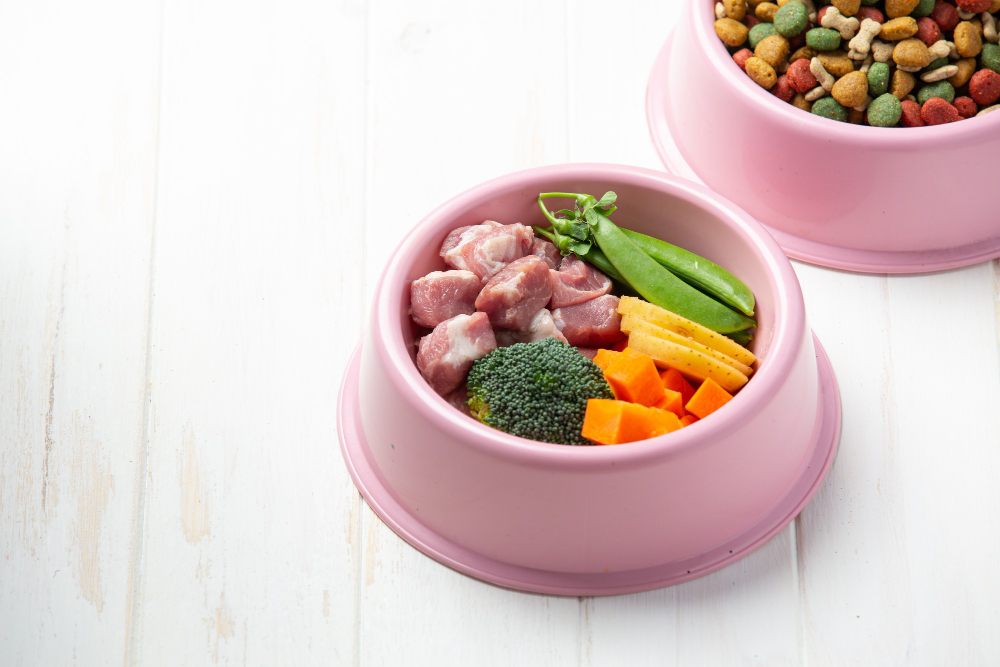Homemade dog food has been doing the rounds with a vengeance in the past few years, often touted as a better and a healthier alternative to counter the artificial constituents in commercialized dog food. Homemade food for dogs usually incorporates raw or cooked constituents sans preservatives, artificial colors, and chemical additives. Is this really, however, the best decision for you and your furry friend? Let’s scrutinize further and learn some facts.
The Anatomy of Homemade Dog Food vs. Commercial Dry Food
Before hitting certain facts regarding homemade and commercial dry dog food, it is of importance to outline general differences between the two foods. Homemade and commercial foods have unique pros and cons as well as an integration of a variety of ingredients in different proportions. Knowing these will enable you make an informed choice of what your pet needs in terms of nutrition.
What Constitutes Homemade Food?
Homemade dog food is crafted from fresh, wholesome ingredients like meat, fruits, vegetables, and greens. It aims to provide a balanced diet rich in essential nutrients vital for your dog’s health and well-being.
The Composition of Dry Food
Dry dog food commercial, on the other hand, is formulated from co-products like meat and bone meal, rice grits as well as egg powder. The co-products are mixed together and subsequently cooked before fortification with vitamins and minerals in a properly balanced ratio to meet your pet’s nutritional requirement. If you’d like to be more in touch with how commercial pet food is formulated, then you can read The Art and Science of Crafting Nutritious Pet Dry Food.
Kinds of Homemade Dog Food: A More In-Depth Look
There are many approaches for homemade dog food, and each is associated with its benefits as well as considerations. Some of the major types include:
- The BARF Diet: This Biologically Appropriate Raw Food diet is designed to try to replicate what a dog might eat in the wild. It contains ground raw meats, fruits and vegetables, and bones. The theory here seems to be that the foods provided should resemble, as closely as possible to those a dog in the wild would eat so as to meet its natural dietary needs.
- Raw Boneless Diet: This is a variation of the BARF diet but has no bones included in it. It still contains in all other part raw meat, fruits, and vegetables. This option is especially advantageous when it comes to dogs that may not process bones adequately or alternatively are prone to having gastrointestinal problems.
- The Cooked Diet: This is one of the options for owners that would like more processed food for their animals. The diet contains cooked meats, vegetables, and rice. Cooking making diet easily digested while itself also promotes reducing bacterial contamination, to some extent safer but with very nutritious value compared to other type of diet.
Customization and Special Needs: Flexibility of Use of Homemade Dog Food
One of the most visible benefits of using homemade dog food is maximum flexibility. A homemade diet can address several health problems concurrently as opposed to commercial dry food, which targets one health problem. For instance, if your dog is battling kidney disease at the same time heart disease, it’s possible to come up with a special homemade diet that will help to maintain both diseases.
You can even get consultations from people who are fully qualified in animal nutrition. They can help plan out a diet that considers various factors like age, size, activity level, and the specific health condition of the dog. This puts homemade food at an ideal position for dogs with complicated health problems who could enjoy such individual care hard to get from commercial alternatives.
Balanced Diet: Debunking the Myths
Myths related to this kind of dog diet is that homemade dog food makes nutritionally better options compared to the over-the-counter available dry food. Well, this may not be the case. Both types of diets can be complete and balanced enough for fulfilling all the nutritional needs for your dog. It is to be noted that consideration for a homemade diet, the nutritional adequacy depends upon proper formulation and ingredient selection.
Mismanagement of food handling and lack of balance in homemade diets may result in problems like obesity. Therefore, consult an animal nutritionist to make the homemade diet selected to be balanced and adequate according to your dog’s requirements. The nutritionist helps you deal with the complexity of canine nutrition securing that all the nutrients necessary in the food are elided no matter which option you secure your pet’s future.
Factors to Consider: Choosing Right
In the case of comparison homemade vs commercial dog foods some crucial factors come into view:
- Availability of Ingredients: Also, keep under consideration the availability of fresh quality ingredients available within your area while proposing a diet plan. If such sourcing of the ingredients becomes a problem, then moving forward with homemade diets won’t be an ideal path to choose from.
- Time and Effort: Homemade dog food is a rather time-consuming task. If you think preparing dog food is quite a hassle and too much of an effort, never purchase commercial dry food since it is easily accessible and readily prepared.
- Cost Implications: Homemade diets may end up being costly considering high cost of fresh ingredients and extra dietary supplements that may be required.
- Balance Nutritional Aspects: Homemade diets should be planned under guidance of an animal nutritionist so as all nutritional parameters are met as required by your dog.
- Storage: Proper storage is essential to maintaining the freshness and nutritional value of your homemade pet food. Find tips on home-storing in our Essential Guide to Keeping Your Pet’s Food Fresh and Nutritious.
Conclusion
Choosing just the right diet for your dog can be an intricate decision, taking an account of various factors such as quality of ingredients available to you, as well as time and effort. Both types of dog foods, homemade or commercial, have pros and cons each and it depends on the specific needs of your dog and your lifestyle. It is important to consult an animal nutritionist to ensure a homemade diet is nutritionally balanced and customized to suit all specific health conditions in your pet. Ultimately, whether you choose a homemade diet or the commercial dry food, the purpose is still the same – to prepare a healthy and balanced diet that sums up to a long and happy life of your dog.

